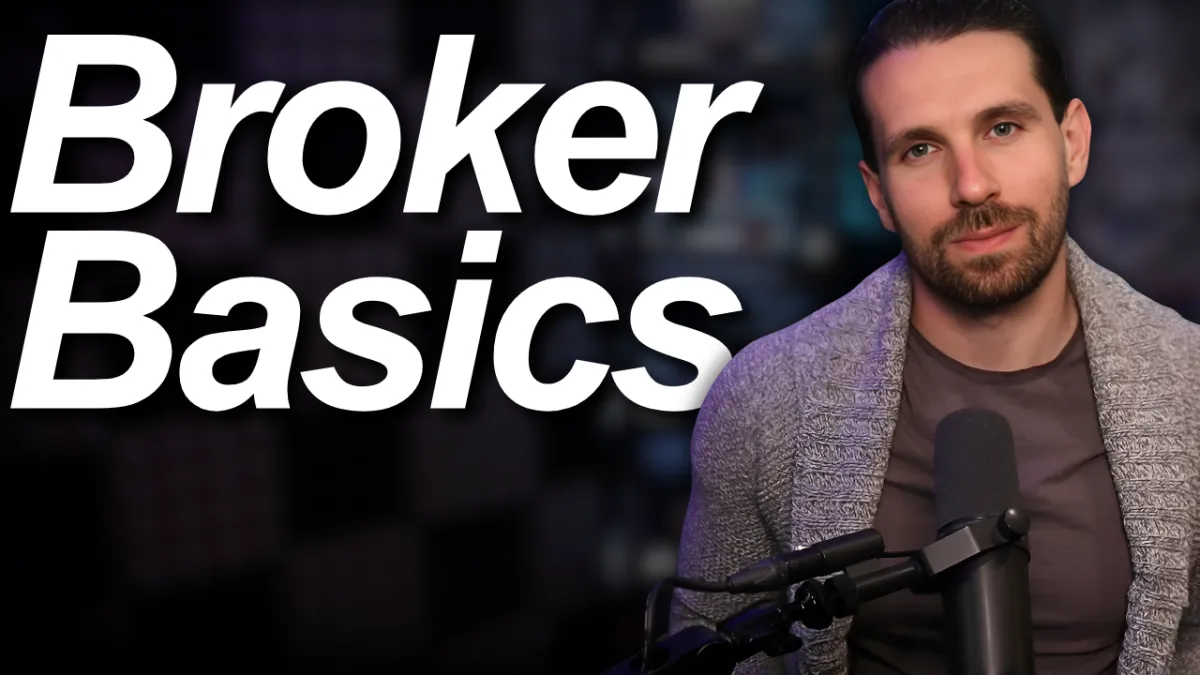Check out my YouTube channel for even more content HERE

What Do New Mortgage Brokers Need to Know About the UK Mortgage Market?
If you're stepping into the world of mortgage advice for the first time, the learning curve can feel steep. Between lender criteria, compliance rules, systems, and sales, it’s easy to get overwhelmed. This guide is here to simplify that journey and give you a clear understanding of the UK mortgage market, the role of a broker, and the practical steps to start building a successful mortgage business.
What Is the Mortgage Market and How Do Brokers Fit Into It?
The mortgage market in the UK is a dynamic space where borrowers, lenders, intermediaries, and regulators interact. As a mortgage broker, your job is to help clients find the right mortgage product, while navigating affordability rules, documentation, lender preferences, and compliance obligations.
Brokers are not order-takers—they are educators, advisors, and advocates. Whether you're working with a first-time buyer or a portfolio landlord, your role is to remove friction and build confidence in the decision-making process.
Who Are the Main Types of Mortgage Lenders?
You’ll be dealing with three primary types of mortgage lenders:
High Street Banks – These include big names like Halifax, Barclays, and NatWest. They’re great for standard cases but aren’t always flexible.
Building Societies – These tend to have more flexible criteria, often ideal for quirky properties or complex income situations.
Specialist Lenders – These are designed for non-standard cases, such as self-employed applicants, bad credit clients, or buy-to-let landlords using limited companies.
Knowing what each lender wants is key to becoming an efficient, confident mortgage adviser. It’s not just about rates—it’s about fit.
What Are the Most Common Mortgage Types You’ll Recommend?
Clients will expect you to clearly explain the pros and cons of:
Fixed-rate mortgages: Safe and predictable, fixed for 2, 3, 5 or even 10 years.
Tracker and variable mortgages: These follow the Bank of England base rate. They can be cheaper but carry risk.
Offset mortgages: Great for clients with savings—interest is reduced by offsetting against the mortgage balance.
Interest-only mortgages: More common in buy-to-let but can be used residentially with a solid repayment strategy.
Understanding these products and when to use them is a must for any new broker.
How Do Mortgage Brokers Make Money in the UK?
There are two main income streams for mortgage brokers:
Procurement fees (proc fees): Paid by the lender after completion. This is typically 0.35% of the loan.
Broker fees: Charged to the client for your advice. Often £395–£995 depending on your market and proposition.
You don’t have to be the cheapest—you just need to be confident in your value. If you're unsure about how to structure your fee model or charge with confidence, this is one of the core areas we tackle in my Mortgage Business Mastery coaching programme.
What Compliance and Regulation Should New Brokers Understand?
As a UK mortgage advisor, you’re regulated by the Financial Conduct Authority (FCA). You must:
Hold a CeMAP qualification (or equivalent).
Issue key documents like the IDD and ESIS.
Follow Consumer Duty and Treating Customers Fairly guidelines.
Be transparent about fees, affordability, and product suitability.
Whether you're directly authorised or working under a network, getting comfortable with regulation is essential.
What Are the Current Trends Impacting the Mortgage Industry?
To advise effectively, you need to keep your finger on the pulse of current market conditions. Right now, brokers are dealing with:
Rising interest rates: These impact both affordability and client anxiety.
Stricter affordability stress testing: Especially relevant for self-employed and contractor clients.
Increased demand for remortgages: Especially as fixed rates end in a higher-rate environment.
A rise in content-driven lead generation: Brokers who focus on video and educational content are standing out online.
Want to learn how to attract high-quality leads without buying them or relying on estate agents? Access the Mortgage Marketing Masterclasses for step-by-step strategies, downloads and guided walkthroughs.
How Can New Mortgage Brokers Stand Out From Competitors?
In a crowded market, it's not enough to say "I offer great service." Every broker says that. You need to position yourself as a trusted expert with a unique voice.
Here's how:
Choose a niche – First-time buyers, BTL landlords, self-employed clients.
Create regular content – Especially educational video content.
Use systems to deliver a better client experience – Tools like Calendly, OneDrive, Go High Level, and task management software can transform how you run your business.
Track key metrics – Know your average proc fee, protection penetration rate, and conversion rate.
Not sure where to begin? My 1:1 Mortgage Business Mastery coaching is designed specifically to help brokers like you scale with systems, content, and confidence.
What Tools and Systems Should New Mortgage Brokers Use?
Technology is your best friend. Here are some essential tools for mortgage brokers in 2024:
CRM software – Manage leads and automate follow-ups (e.g., Go High Level or Mortgage Brain).
Calendly – Let clients book appointments without the back-and-forth.
Document storage – Use Google Drive or OneDrive to store templates and client files.
Video editing apps – Use apps like Captions or Canva for simple, polished social content.
ChatGPT – Brainstorm content ideas, refine emails, and simplify complex jargon into plain English.
Every high-performing broker I coach has some form of automation in place—it’s what gives you the bandwidth to scale.
What’s the Most Important Thing to Focus On as a New Mortgage Broker?
In your first year, your main job is to learn, show up, and simplify your message. You don’t need to be everywhere, but you do need to be consistent.
Here’s what matters most:
Create a process for your client journey.
Get help where you need it—don't waste time trying to figure it all out alone.
Build a personal brand—visibility leads to trust.
Prioritise systems—your future self will thank you.
Remember, building a mortgage business is a marathon, not a sprint. And the brokers who last? They focus on brand, systems, and client experience—not just leads.
Want Help Building Your Mortgage Business From the Ground Up?
Whether you're struggling with branding, content creation, sales process, or confidence—I’ve helped hundreds of mortgage advisers simplify success and scale sustainably.
You can start by joining my Mortgage Business Mastery coaching programme or watching one of my free masterclasses packed with actionable tools, downloads, and frameworks to level up your business.
Need a quick answer to something? I’m always happy to chat—send a message on Instagram or connect with me on LinkedIn.
